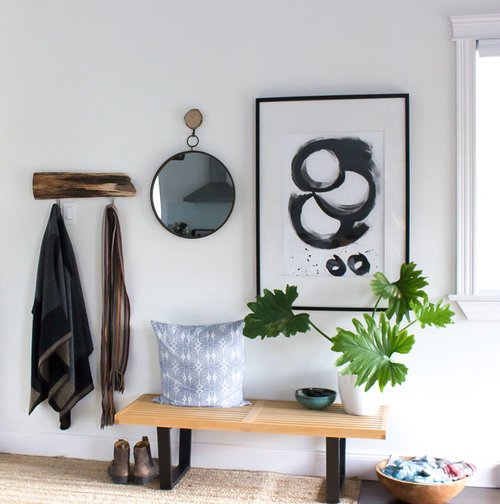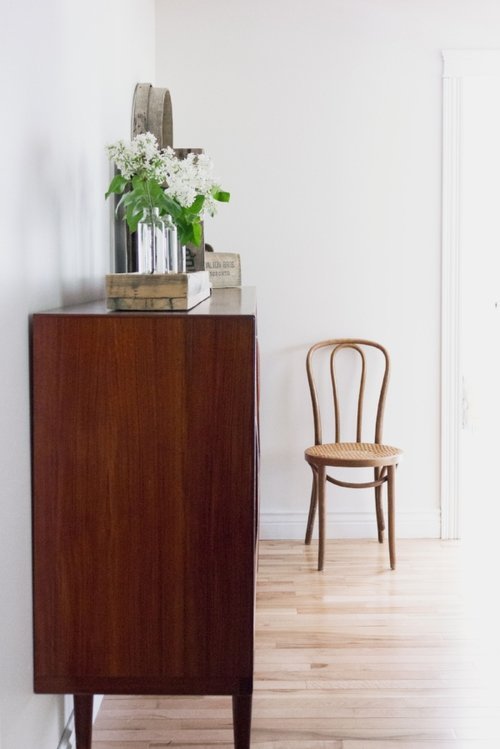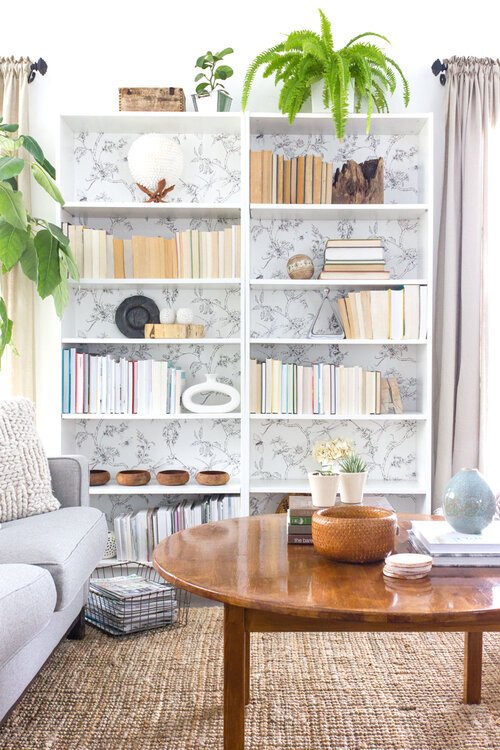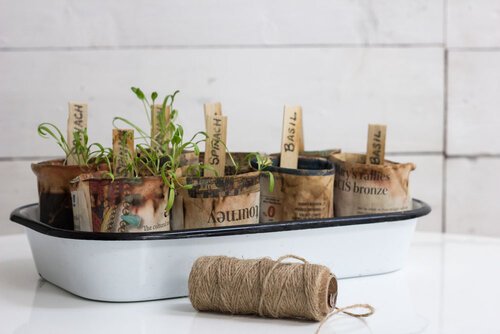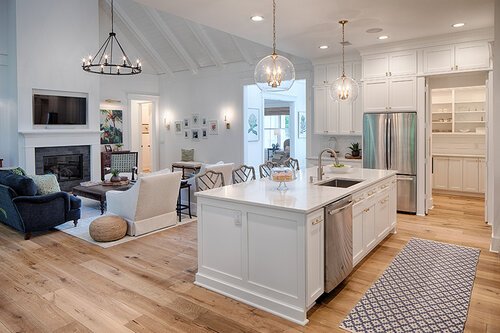Six Steps To An Essentialist Home
If you've been following my blog for a while, you know that I'm an Essentialist. I think of it as being a more moderate sister of the Minimalist. I'm not trying to get down to a certain number of things in my home or take everything off my walls, but I am about paring down anything that gets in the way of the essence of how my home can help me live my best life.
My own essentialist home has white walls that are calming and drawers and cupboards that aren't packed full of 'stuff'. But it's also full of comfy pillows and throws, soft rugs, a collection of unique boxes and baskets, handcrafted ceramic mugs, many plants and tons of books. These things are essential to me feeling happy and inspired and comfortable (if you're interested you can read more about why minimalism isn't for me).
Originally inspired by the book Essentialism, by Greg McKeown, I've adopted the essentialist approach to home design and décor in my own homes and in clients'. It includes:
decluttering only those things that are essential to me living really well (ie. not clutter that I never use but have to clean around)
eliminating anything that's associated with negative feelings (ie. guilt, sadness, frustration, anxiety)
creating a soothing palette with light, bright walls
setting up very practical and functional systems and organization so that daily living is easy
adding comfort, personality, inspiration and meaning.
HERE ARE 6 SIMPLE STEPS YOU CAN TAKE TO BEGIN CREATING YOUR OWN ESSENTIALIST HOME:
1. Clear your surfaces.
Having mostly clear counters, tables and dressers is visually calming and very functional as well. You'll have room to actually prep and cook with ease, eat together at your table, and enjoy a sense of having more space around you. Take time to clear off your kitchen and bathroom counters as much as possible by making space for appliances and practical items in drawers and cupboards. Have nothing on your dining room table except perhaps a nice centrepiece of flowers or plants or candles or fruit. Edit down the things on your coffee and side tables that don't belong. And make room on your dresser just for things that are pretty and functional for getting ready in the mornings.
2. Do a declutter dash.
Take 10-15 minutes each day for the next week to quickly dash around your home to clear obvious clutter and 'stuff' you don't need or want in your home. (Get directions emailed to you each day when you join my free 5-Day Declutter Dash!) Grab an empty box and start room by room going through drawers, closets and cupboards to eliminate things that are getting in your way, unnecessarily taking up space, or bringing bad juju into the house. No need to get bogged down if certain areas are overwhelming. Just get rid of the top layer of obvious clutter that does not bring joy or function to your life. Once done, sell, donate or recycle what you have in the box and enjoy the lightness it brings. You might want to start with:
the linen closet
kitchen food storage containers
under your kitchen and bathroom sinks
the kitchen utensil drawer and/or caddy
the entryway/mudroom
your bedroom nightstand
the broom/utility closet
3. Set up an essential entryway.
An essential entryway is one that gets you out the door quickly and easily and that greets you with that "ahh" feeling when you return home. Make sure your entryway is clutter-free so that you're not tripping over boots and coats. Add enough hooks and hangers so that there is a place for everything. Keep a small stoop to sit down either a bench, chair or even just a stump stool. Place a bowl or tray on a wall shelf, chest of drawers or a bench to corral keys, change, sunglasses, etc. Invest in enough bins or baskets to contain all your outdoor gear like mitts, hats, scarves, backpacks, flashlights, grocery bags, etc. Here's a complete entryway essentials guide.
4. Clear your workspace.
A clear and uncluttered space to work is essential for most people in improving productivity, creativity, and clarity. Remove everything from your desk (or your coffee table or kitchen counter or wherever your workspace might be). Toss all papers that are not needed. File away all papers from projects that are completed but need to be kept for reference. Put a basket or tray on your desk to corral just one single pile of papers for projects that still need to be completed. Then rework your desktop according to Feng Shui practice: place your phone and any tools like pencils and pens on the right. Place your basket of to-do papers and any reference books on your left. Your computer and chair are in the centre. Use pretty jars or mugs to gather your pens and pencils and use a nice bowl or wooden box to keep useful tools like paperclips handy but neatly contained. Add a plant to your desk - it's been proven to reduce stress by 25%. If you're up for a complete office refresh to promote calm and productivity at work, check out this post.
5. Calm your bedroom.
This room, more than any, needs to be a relaxing oasis that encourages rest and rejuvenation. It's an essential for everyone.
Clear off your nightstand so it contains only books, a good light, and a bowl or tray to corral your essentials like glasses and lipbalm.
Eliminate electronics from your bedroom - they've been proven to interfere with sleep, even when shut off.
Remove anything not relaxation related - like exercise equipment!
Make sure the artwork and colours in your room are soothing to you.
Invest in comfortable bedding and pillows.
Cover your windows with good blinds and/or curtains so that no outside light gets in and you can feel very safe in a den-like atmosphere.
Don't position your bed under a window or directly opposite a doorway if possible. Feng shui says that the best position for energy flow in the bedroom is to have your bed on a wall adjacent to the doorway and a window so that you can see it but not be directly facing it.
6. Add meaning and joy.
The secret to designing the kind of beautiful home that makes you peacefully happy and at your best is making it be a reflection of you and your values.
Personality and meaning comes from telling your story, your purpose, and your values. If it's just style with no substance, it feels hollow.
So personalize your home with things you love (and only those you love), that inspire you, and that refresh your soul.
You might include photos, mementos, colourful accessories, artwork that makes you smile or books that make you want to curl up and read the day away. Just make sure that these things add a layer of very personal meaning and joy, not simply clutter for the sake of style.
These simple steps will get you on your way to creating a simple, calm, joyful essentialist home where you can thrive on a daily basis.






